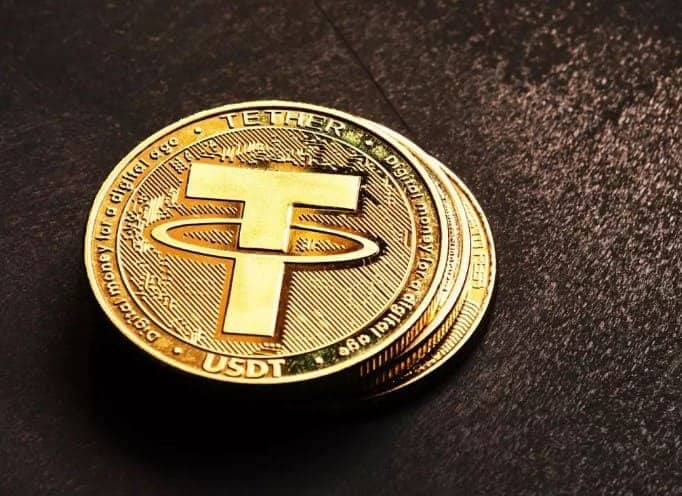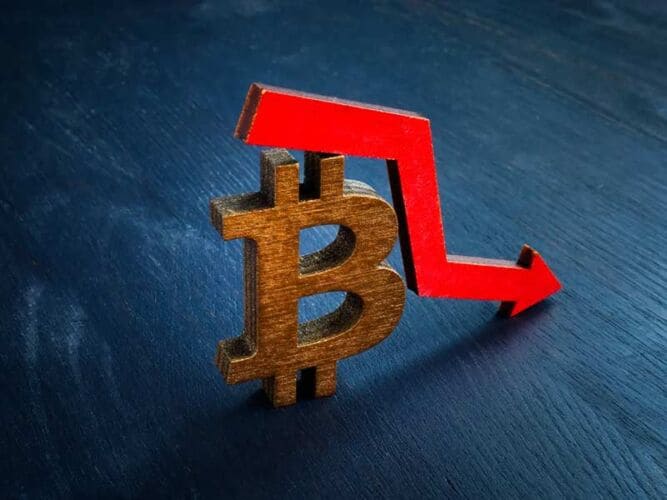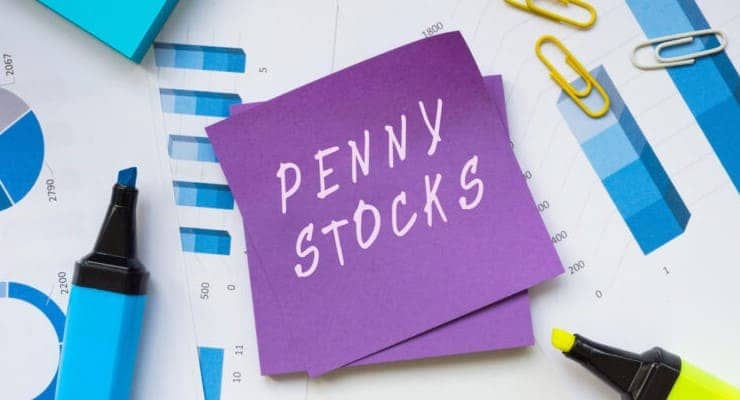
What Is Tether? How Does It Work?
Tether, often referred to as USDT, is a type of cryptocurrency that aims to maintain a stable value by pegging it to a traditional fiat currency, typically the US dollar. It is categorized as a stablecoin because its value is designed to remain stable, minimizing the price volatility commonly associated with other cryptocurrencies like Bitcoin or Ethereum.
Tether was launched in 2014 and is issued by Tether Limited, a company affiliated with Bitfinex, one of the world’s largest cryptocurrency exchanges. The primary purpose of Tether is to provide users with a digital asset that mirrors the value of a specific fiat currency, offering stability and facilitating transactions within the crypto ecosystem.
The mechanism behind Tether’s stability lies in its backing. Each Tether token is supposedly backed by an equivalent amount of fiat currency held in reserve by Tether Limited. For example, if 1 USDT is issued, there should be 1 US dollar held in reserve.
To ensure transparency and maintain trust, Tether Limited claims to undergo regular audits to verify the reserves and ensure that the issued tokens are fully backed. However, it’s important to note that these audits have been a subject of controversy and criticism due to a lack of independent verification.
Tether operates on various blockchain platforms, including Bitcoin, Ethereum, and Tron, allowing users to transact with Tether tokens across different networks. It has gained significant popularity within the cryptocurrency industry, serving as a stable trading pair and acting as a bridge between traditional financial systems and the world of cryptocurrencies.
While Tether aims to provide stability and liquidity, its centralized nature and potential regulatory concerns have led to debates and scrutiny within the crypto community. It is important for users and investors to understand the risks and limitations associated with Tether before engaging with it in the crypto market.
Tether Is a Stablecoin
Tether, often referred to as USDT, is a type of cryptocurrency that falls into the category of stablecoins. Unlike other cryptocurrencies such as Bitcoin or Ethereum, which can experience significant price volatility, stablecoins are designed to maintain a stable value. Tether achieves this stability by pegging its value to a traditional fiat currency, typically the US dollar, at a 1:1 ratio.
The primary purpose of Tether is to provide users with a digital asset that retains a stable value, making it useful for various applications within the cryptocurrency ecosystem. It offers a reliable means of transacting and storing value, especially in situations where the volatility of other cryptocurrencies can be a hindrance.
Tether’s stability is achieved through a mechanism called “full reserve banking.” This means that for every Tether token issued, there should be an equivalent amount of fiat currency held in reserve by Tether Limited, the company behind Tether. The idea is that these reserves provide a guarantee for the stability of Tether’s value.
Tether is widely used as a trading pair on cryptocurrency exchanges, allowing traders to hedge against price fluctuations and easily move in and out of other cryptocurrencies. It is also used as a means of transferring value across different exchanges or wallets without the need for traditional banking systems.
While Tether has gained popularity within the cryptocurrency space, it has also faced scrutiny and controversy. Concerns have been raised regarding the transparency and auditing of Tether’s reserves, as well as its potential impact on the stability of the wider cryptocurrency market.
How Does Tether Work?
Tether operates by using a combination of blockchain technology and traditional banking systems to maintain its stability and facilitate the issuance and redemption of Tether tokens (USDT). Here’s a breakdown of how Tether works:
Fiat Currency Reserves: Tether claims to maintain a reserve of traditional fiat currency, typically the US dollar, to back the issuance of Tether tokens. According to Tether Limited, the company behind Tether, each USDT in circulation is supposed to be backed by an equivalent amount of fiat currency held in reserve.
Issuance and Redemption: Tether tokens are issued and redeemed through Tether Limited. Users can acquire Tether tokens by depositing fiat currency into Tether Limited’s bank account. Once the deposit is confirmed, an equivalent amount of Tether tokens is issued to the user’s cryptocurrency wallet. Similarly, users can redeem their Tether tokens by sending them back to Tether Limited and receiving the equivalent amount of fiat currency.
Transparency and Audits: Tether Limited claims to undergo regular audits to provide transparency and assurance that the Tether tokens are fully backed by the claimed reserves. However, it’s important to note that these audits have faced criticism due to a lack of independent verification and transparency.
Blockchain Integration: Tether is implemented on various blockchain platforms, including Bitcoin, Ethereum, and Tron. Tether tokens are issued as tokens on these blockchains, enabling their easy transfer and compatibility with different cryptocurrency wallets and exchanges.
Trading and Usage: Tether is widely used within the cryptocurrency ecosystem as a stable trading pair. It provides traders with a stable value reference against which they can trade other cryptocurrencies. Tether also serves as a means of transferring value across different exchanges, wallets, and blockchain networks, offering a convenient alternative to traditional banking systems for crypto transactions.
It’s important to note that while Tether aims to maintain a stable value, its stability relies on the trustworthiness and transparency of Tether Limited, as well as the integrity of its claimed reserves. Any concerns or doubts about the backing of Tether tokens could impact its stability and user confidence in the system.
How Is Tether Backed?
Tether, the popular stablecoin, claims to be backed by reserves of traditional fiat currency. The primary reserve currency used by Tether is the US dollar, although Tether has also introduced tokens pegged to other fiat currencies like the euro or the offshore Chinese yuan.
According to Tether Limited, the company behind Tether, each Tether token (USDT) in circulation is supposed to be backed by an equivalent amount of fiat currency held in reserve. These reserves are held in Tether Limited’s bank accounts and are meant to provide assurance and stability to the value of Tether.
However, it’s important to note that there have been concerns and controversies surrounding the transparency and auditing of Tether’s reserves. Tether Limited has faced criticism for not providing regular and independent audits to validate the backing of its tokens.
The lack of transparent and verified audits has led to skepticism and speculation about whether Tether’s reserves are indeed sufficient to back a large number of tokens in circulation. Some critics argue that Tether’s claims of full reserve backing should be subjected to more rigorous and independent scrutiny.
Additionally, Tether’s relationship with the cryptocurrency exchange Bitfinex, with both entities sharing common ownership and management, has raised questions about potential conflicts of interest and the intermingling of funds.
Despite these concerns, Tether continues to be widely used within the cryptocurrency ecosystem, primarily as a trading pair and a means of transferring value between different exchanges. Its stability and liquidity have made it popular among traders seeking a stable reference point for their transactions.
In recent years, Tether has made efforts to address transparency concerns by disclosing limited information about its reserves. However, full transparency and independent audits are still lacking, leaving some investors and market observers cautious about the true backing of Tether tokens.
Tether claims to be backed by reserves of traditional fiat currency held by Tether Limited. However, due to a lack of transparent and independently verified audits, there are concerns and skepticism about the adequacy and transparency of these reserves. Investors and users should carefully consider these factors when engaging with Tether and assess the potential risks associated with its backing mechanism.
Tether vs. TerraUSD
| Features | Tether (USDT) | TerraUSD (UST) |
| Pegged Currency | US Dollar (USD) | US Dollar (USD) |
| Stability Mechanism | Fiat Reserve | Algorithmic Mechanism |
| Backing | Claims to be backed by traditional fiat currency reserves. Audits are not fully transparent and independently verified. | Collateralized by a pool of diverse and liquid assets, including stablecoins, crypto assets, and bonds. Collateral is verified and transparently audited on-chain. |
| Stability | Aims to maintain a stable value of 1:1 with the US dollar. However, there have been instances of slight deviations in price and occasional periods of instability. | Employs an algorithmic mechanism to maintain price stability. It expands and contracts the money supply based on supply and demand dynamics, aiming to keep the value of 1 UST equal to 1 US dollar. TerraUSD has demonstrated a high degree of stability since its launch. |
| Transparency | Transparency regarding reserves and audits has been a subject of controversy and criticism. Independent verification of reserves is lacking. | Provides on-chain transparency with real-time collateral and reserve data. Audits are conducted regularly by reputable third-party firms, ensuring transparency and accountability. |
| Governance | Largely controlled by Tether Limited. Decision-making power rests with the company and its associated entities. | Operates on the Terra blockchain, which employs a decentralized governance model. Users who hold the native Terra (LUNA) token can participate in the governance process, proposing and voting on protocol upgrades and changes. |
| Blockchain Integration | Issued on various blockchain platforms, including Bitcoin, Ethereum, and others. | Built on the Terra blockchain, which offers fast and low-cost transactions. TerraUSD can be easily integrated into applications and smart contracts on the Terra network. |
| Adoption and Use Cases | Widely adopted and used as a stable trading pair and medium of exchange within the cryptocurrency ecosystem. Used for remittances, trading, and as a store of value. | Rapidly gaining adoption within the decentralized finance (DeFi) ecosystem. Used for lending, borrowing, yield farming, and stable payments. TerraUSD is integrated with various DeFi protocols and applications. |
Tether vs. Bitcoin
| Features | Tether (USDT) | Bitcoin |
| Type | Stablecoin | Cryptocurrency |
| Value Stability | Aimed at maintaining a stable value with a peg to a traditional fiat currency, typically the US dollar. | Highly volatile with significant price fluctuations. |
| Backing | Claims to be backed by reserves of traditional fiat currency. However, audits are not fully transparent and independently verified. | Decentralized and operates on a blockchain with no backing by traditional assets. Value is derived from market supply and demand dynamics. |
| Blockchain Technology | Utilizes various blockchain platforms, including Bitcoin, Ethereum, and others, to issue tokens. | Operates on its own blockchain, known as the Bitcoin network. |
| Supply | Centralized issuance and control by Tether Limited. Additional tokens can be created or burned as demand fluctuates. | Decentralized issuance and controlled by the Bitcoin network. The supply is limited to 21 million coins, with new coins created through a process called mining. |
| Governance | Largely controlled by Tether Limited, with decision-making power resting with the company and its associated entities. | Decentralized and governed by the consensus of the network participants. No central authority or entity has control over Bitcoin. |
| Use Cases | Primarily used as a stable trading pair and medium of exchange within the cryptocurrency ecosystem. Used for remittances, trading, and as a store of value. | Widely accepted as a decentralized digital currency. Used for peer-to-peer transactions, investment, and store of value. |
| Adoption | Widely adopted within the cryptocurrency ecosystem and serves as a popular trading pair on exchanges. | Considered the first and most well-known cryptocurrency with widespread adoption globally. |
| Security | Security relies on the trustworthiness and transparency of Tether Limited. | Utilizes robust cryptographic techniques and a decentralized network for security. |
| Transparency | Transparency regarding reserves and audits has been a subject of controversy and criticism. Independent verification of reserves is lacking. | Transactions on the Bitcoin network are transparent and recorded on the blockchain, allowing for public verification and auditing. |
Is Tether a Good Investment?
Deciding whether Tether (USDT) is a good investment depends on individual preferences, risk tolerance, and investment goals. As a stablecoin, Tether aims to maintain a stable value and minimize price volatility. However, it’s important to note that investing in Tether is fundamentally different from investing in traditional assets like stocks or bonds.
Tether is designed to provide stability and liquidity within the cryptocurrency ecosystem, primarily as a trading pair and means of transferring value. It is not intended to generate returns or capital appreciation like traditional investments. Therefore, the potential for significant gains or profits from investing in Tether alone may be limited.
Investors who value stability and seek to mitigate the risks associated with other volatile cryptocurrencies may find Tether to be a useful tool for hedging or liquidity purposes. It can provide a stable reference point for trading and a convenient way to store value temporarily.
However, it’s essential to consider the potential risks and concerns surrounding Tether, such as the transparency of reserves and audits, regulatory uncertainties, and the potential impact of market factors on its stability. These factors could affect the long-term viability and trustworthiness of Tether as an investment option.
It’s recommended to conduct thorough research, understand the risks involved, and consider consulting with a financial advisor before making any investment decisions, including investing in Tether.
How to buy Tether in Canada?
To buy Tether (USDT) in Canada, you can follow these general steps:
Choose a cryptocurrency exchange: Select a reputable cryptocurrency exchange that supports Tether trading. Some popular exchanges in Canada include Binance, Kraken, Bitbuy, and Coinsquare.
Sign up and verify your account: Create an account on the chosen exchange and complete the required verification process. This typically involves providing personal information and identity verification documents.
Deposit funds: Deposit Canadian dollars (CAD) into your exchange account using the available deposit methods, such as bank transfer or debit/credit card. Ensure that the chosen exchange supports CAD deposits.
Locate Tether trading pair: Once your account is funded, find the Tether trading pair on the exchange. For example, you may look for USDT/CAD or USDT/BTC depending on your preferred trading pair.
Place an order: Choose the type of order you want to place, such as a market order (immediate purchase at the current market price) or a limit order (purchase at a specific price). Enter the amount of Tether you wish to buy and review the order details before confirming.
Complete the transaction: Once your order is executed, the purchased Tether will be credited to your exchange wallet. You can then choose to hold the Tether in your exchange wallet or transfer it to a personal wallet for added security.
It’s important to note that the availability of Tether and the specific process may vary slightly among different exchanges. It’s recommended to review the exchange’s documentation or contact their customer support for precise instructions.
Conclusion
In conclusion, buying Tether in Canada involves selecting a reputable cryptocurrency exchange, creating an account, depositing funds, locating the Tether trading pair, placing an order, and completing the transaction. Remember to conduct thorough research on the chosen exchange and consider factors such as fees, security measures, and user reviews before making any transactions. Additionally, always exercise caution and follow best practices when handling cryptocurrencies.
Related Posts

Best Loan Apps In India 2023admin . November 7, 2022

BEST NFT WALLETS 2022admin . January 27, 2022

Top 20 Best Alternatives to Fixed Deposits in Indiaadmin . August 8, 2023

Best Canadian Penny Stocks to Buy Right Nowadmin . February 12, 2024

Top 10 Best Crypto Tech Companies In India 2024admin . November 28, 2023

Cryptocurrency Is Risky. 7 Things Every Crypto Investor Be Awareadmin . January 19, 2022

What is Cryptocurrency and How Does it Work?admin . March 31, 2023

Stock Market Holidays 2023: Trading Schedule for Novemberadmin . October 30, 2023

What Is an NFT? | How Does an NFT Workadmin . June 19, 2023
Latest Posts

Exploring the Best Cash Advance Apps of 2024 April 8, 2024

Top 34 Passive Income Ideas in 2024 March 19, 2024

Top 10 Penny Stocks to Buy Canada 2024 February 23, 2024

Best Canadian Artificial intelligence stocks under $1 2024 February 23, 2024

Top Artificial Intelligence Stocks Canada 2024 February 20, 2024

